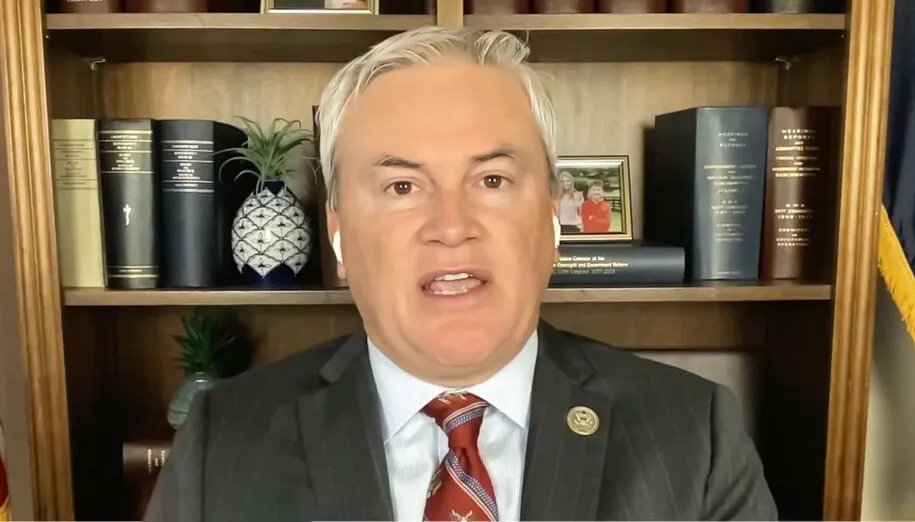Didn’t hear the Donald Trump Halloween joke? Don’t worry—Kentucky Democrats, still buoyed by the Virginia and New Jersey election results, keep on telling it.
“What do Donald Trump and a pumpkin have in common?”
“They’re orange on the outside, hollow on the inside, and should be tossed out in early November.”
The voters won’t get a chance to dump Trump until Nov. 3, 2020. But this month, Trumpism got trashed at the polls in the Garden State and the Old Dominion. Democrats were elected governors in both states.
Bluegrass State Democrats are jubilant—and Republicans maybe jittery—especially over Team Blue’s near-takeover of the Virginia House of Delegates, the lower chamber of the state legislature.
It looks like the Democrats have whittled a 66-34 GOP edge to 51-49.
The Kentucky House is 64-36, Republican. So visions of retaking the chamber, or coming close, are rivaling sugar plums in Democratic noggins as Christmas approaches.
 Ben Self of Lexington, the new Kentucky Democratic party chair, is flat out excited. “I’ve got to be,” he said with a chuckle.
Ben Self of Lexington, the new Kentucky Democratic party chair, is flat out excited. “I’ve got to be,” he said with a chuckle.
Virginia, he said, “is what happens when people come together and work hard.” He said nobody believed the Democrats could come within a whisker of flipping the House of Delegates. “But I think people are starting to say that about Kentucky.”
 Krystal Ball, the Virginia-born MSNBC contributor and Democratic consultant who lives in Louisville, is guardedly optimistic about her party’s fortunes in Kentucky next November.
Krystal Ball, the Virginia-born MSNBC contributor and Democratic consultant who lives in Louisville, is guardedly optimistic about her party’s fortunes in Kentucky next November.
But she is wary of reading too much into her home state’s vote. She’s crunched the numbers. “If you take off northern Virginia, which are the prosperous D.C. suburbs, [Democratic governor-elect Ralph] Northam goes from winning by nine to losing by three.”
The only metro-suburban sections of Kentucky are Louisville, Lexington, and Covington, and their environs.
Louisville is the seat of Jefferson County, Lexington of Fayette. Jefferson and Fayette are the only two of Kentucky’s 120 counties that Democrat Hillary Clinton carried over President Trump, a Republican who won 62.5 percent of the state’s vote. Covington is in mostly Republican northern Kentucky, opposite Cincinnati.
Because most of Kentucky is rural, conservative, and mainly leans Republican, “we don’t want to be over-exuberant,” said Ball, who wrote Reversing the Apocalypse: Hijacking the Democratic Party to Save the World.
Even so, she said that in Virginia, “Democrats improved performances in a lot of places. To me the lesson is—the thing to get excited about—is that so many great and unusual candidates stepped up to run for the House of Delegates. That, more than the top of the ticket, is what drove excitement and turnout across the state.”
Ball said she can envision “a similar groundswell of interest and enthusiasm for running for office, and that parleying into increased turnout and operations here on the ground in Kentucky. “
She said Northam’s victory was larger than expected. But the biggest surprise, she added, was in the House of Delegates. “Everybody—all seasoned hands—said there was no way we would come even close to taking control.”
Health Care and Pensions
Ball hesitated to predict how many Kentucky House seats the Democrats might flip next November. But she pointed to a pair of potent issues for Democrats: health care and public pensions.
Tea-party Republican Gov. Matt Bevin dismantled Kynect, one of the most successful state health care exchanges under the Affordable Care Act. National polls show that most voters oppose Republican bills in Congress to repeal the ACA.
“Everywhere I go, the number one issue people are talking about is health care,” Ball said. “The Republicans have made a really big mess for themselves, both in terms of what they have proposed, which has been horrifying to a lot of people, and in their inability to get anything done to improve people’s lives on health care.
“That has finally hit home for people. It’s not possible for Republicans just to be against Obamacare. Health care is energizing our side and won over a lot of swing voters and independents in Virginia. That is what I see as the common thread between Kentucky and Virginia.”
Bevin’s plan to shore up the state’s financially-strapped public pension plans by cutting some benefits for current and retired public employees and forcing new hires onto risky 401(k)-type private plans has triggered a tsunami of opposition.
“Retirement security is a big issue,” Ball said. “You’ve been promised something; you’re counting on it; you’ve done everything right, and then the rules are changed on you.”
She also said that with the GOP controlling the governorship and both houses of the legislature, “the Republicans own everything. The dog has caught the car.”
Ball said because some Republicans are balking at the governor’s pension plan, “it’s not a partisan issue.” Voters, too, “are looking at it on its own merits rather than through their partisan inclinations. On its merits. it’s bad.”
The Rural-Urban Divide
Though health care and pensions look like double trouble for the GOP, Ball cautioned Kentucky Democrats not to get too carried away over the vote in Kentucky’s parent state.
“We should be wary about drawing too many conclusions from Virginia because we did rely heavily on northern Virginia. We didn’t win a single precinct west of Radford [in rural, mountainous western Virginia].”
She said the Virginia election showed that the rural-urban divide persists. Indeed, Republican Ed Gillespie did well in rural areas like those that have made the Bluegrass State into Republican red. The big gains Democrats made in the House of Delegates are mostly in northern Virginia.
Still, Self pointed to Oklahoma as a good omen for Kentucky Democrats next year. In another special election Tuesday, a Democrat won a Sooner State senate seat in a district Trump bagged by nearly 40 percent.
The victory “is an incredible indication of the momentum that our party has,” he said. “To go from Trump-plus-40 to a little known Democrat winning is quite a swing.”
Democrats have ousted Republicans in three other special elections for the state legislature since the president was inaugurated. Trump carried all 77 Oklahoma counties and piled up more than 65 percent of the vote.
Self: Dems Will Run, and Win
“There’s a huge wind at our back with the wins not only in Virginia but also in Oklahoma,” Self said. “I think you’re going to see this excitement turn into some great candidates stepping up to run, and lots of electoral success.”
Lately, Democrats win statewide races in Kentucky if there is heavy Democratic voting in the two blue bastions: Louisville and Lexington.
Self claimed that Democrats will flock to the polls statewide for local, state, and congressional elections next year, and for the 2019 governor’s race.
He predicted that skeptics will be surprised at the turnout. “We’ve got a grassroots base that is fired up and ready to make a difference. We’re going to have a huge turnout operation throughout the state; of course, that will include our major metros, but also will include the rest of the state.”
Self vowed that the Democrats aren’t giving up on rural and small-town Kentucky. He promised his party “is not going to cede any areas of the state to the Republicans. We’re going to compete, ask for votes, and have an active messaging and field program in all areas of the state. The foundation of this will be our county party systems, which are well tuned in to their communities and can help us to focus where we should be focusing.”
In an email to the party faithful, Self said that Democratic victories in Virginia and Oklahoma “show us that unlike in the past, we can’t write off any districts as out of reach. Too often, we’ve focused on a few races and poured all our money and effort into those. That’s not sufficient anymore. We have to compete in every county, in every House and Senate race, and in every municipality across our commonwealth.”
The email had a link where people can sign up to run.
Challenged Self: “In 2018, all of our State House Representatives, half of our State Senators, and each of our six Congressional House Representatives are up for re-election. At the local level, we’ll be voting on county magistrates, jailers, city commissioners, school board seats, and more. But what’s really on the ballot is the Republican majority’s agenda that is driving down our working-class wages, and threatening our public education, teachers, and our public workforce.“
[tweet_box design=”default” float=”none”]What’s really on the ballot is the Republican agenda to drive down working-class wages.[/tweet_box]
[tweet_box design=”default” float=”none”]What’s really on the ballot is the Republican agenda to attack our teachers.[/tweet_box]
[tweet_box design=”default” float=”none”]What’s really on the ballot is the Republican agenda to hurt public education.[/tweet_box]
[tweet_box design=”default” float=”none”]What’s really on the ballot is the Republican agenda to attack our public workforce.[/tweet_box]
–30–
Thoughts? Comments? Add yours in the comment section at the bottom of the page.
Comments






